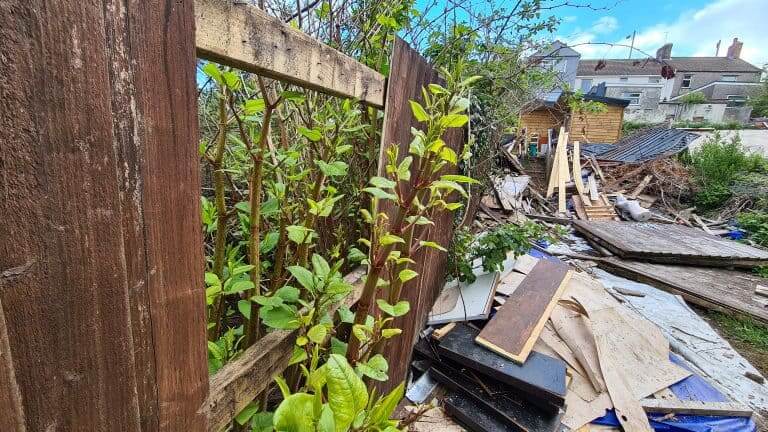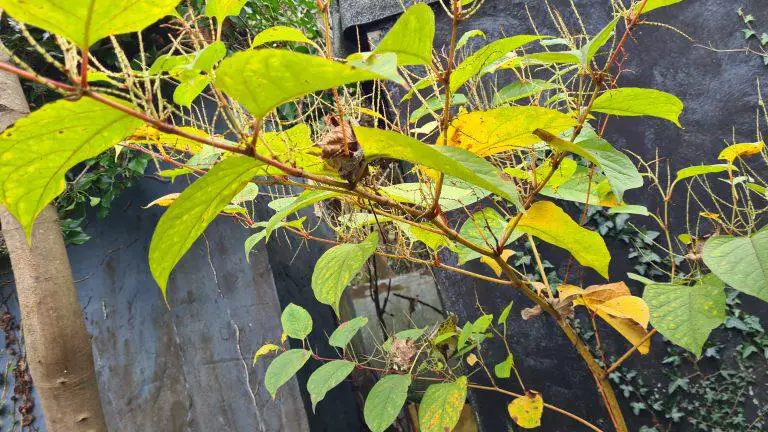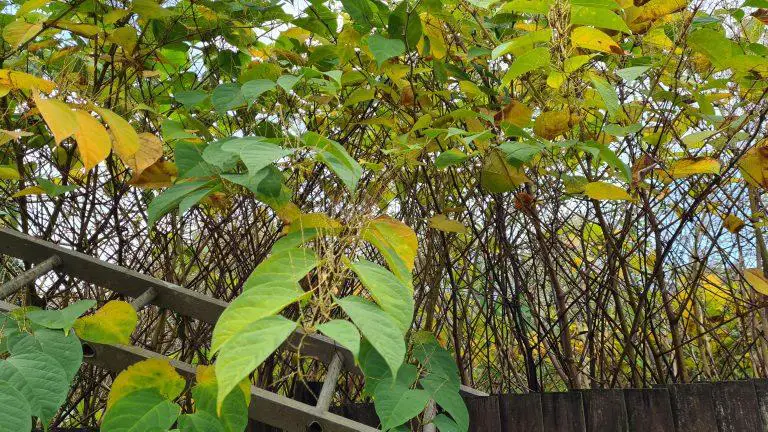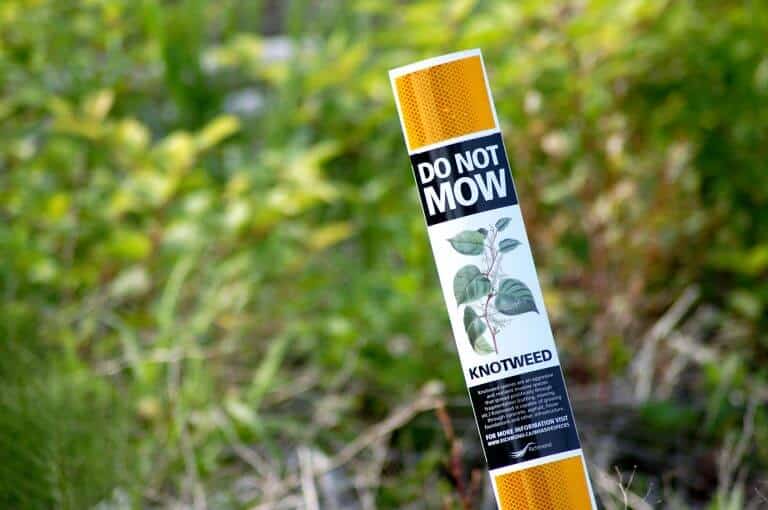If you’re a homeowner or gardener, you’ve probably heard of Japanese Knotweed – a highly invasive plant that can cause serious damage to your property. This plant is notoriously difficult to get rid of and can quickly spread to neighbouring gardens and properties if not dealt with properly. In this article, we’ll share some practical tips on how to prevent Japanese Knotweed from spreading and taking over your garden.
Firstly, it’s important to understand the characteristics of Japanese Knotweed. This plant has a deep and extensive root system that can grow up to three metres deep and seven metres wide. It can grow through concrete, tarmac and even the foundations of buildings, causing structural damage and reducing the value of your property. To prevent the spread of Japanese Knotweed, it’s essential to identify it early and take action as soon as possible.
One of the simplest ways to prevent Japanese Knotweed from spreading is to avoid disturbing the soil around the plant. This can cause the plant to spread even further, as the smallest piece of root or stem can grow into a new plant. Instead, you should contact a professional to safely remove the plant and dispose of it properly. By following these tips, you can protect your property from the damaging effects of Japanese Knotweed and keep your garden looking beautiful.
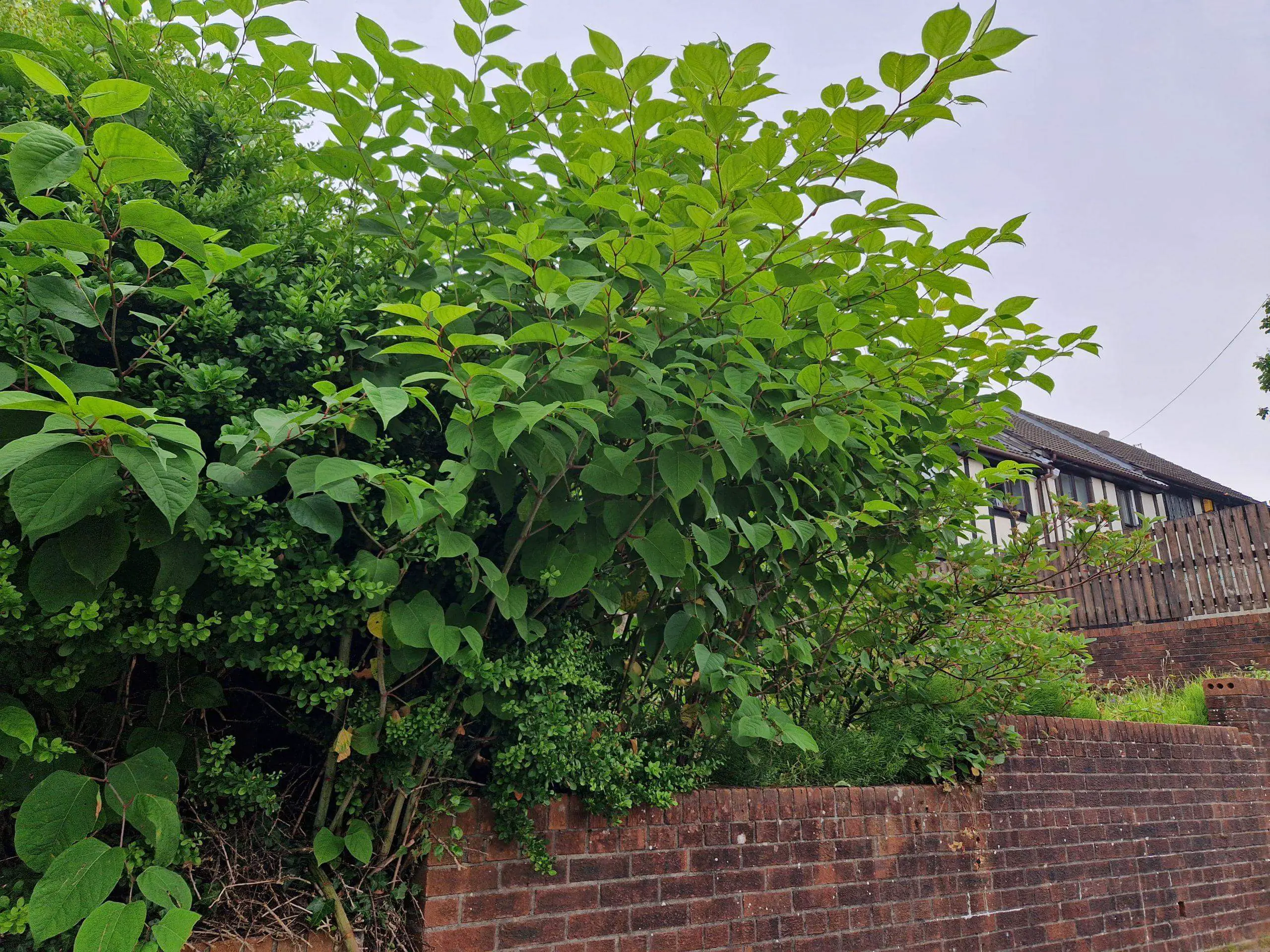
Identifying Japanese Knotweed
Appearance
Identifying Japanese Knotweed is the first step in preventing it from spreading. This invasive plant has a distinctive appearance that sets it apart from other plants. Here are some characteristics to look out for:
- Heart-shaped leaves: Japanese Knotweed has large, heart-shaped leaves that are typically around 6 inches long. They are arranged in an alternate pattern along the stem.
- Perennial: This plant is a perennial, which means it comes back year after year. It can grow up to 10 feet tall and 3-4 feet wide.
- Rhizomes: Japanese Knotweed spreads through underground rhizomes, which can grow up to 3 meters deep. This makes it difficult to control and eradicate.
- Canes: The stems of Japanese Knotweed are hollow and bamboo-like, with nodes that are spaced about 3-5 inches apart. They are green with reddish-brown speckles and can grow up to 2 inches in diameter.
- Dormant: During the winter months, Japanese Knotweed becomes dormant. The stems will die back, but the rhizomes will remain alive and continue to spread.
- Cuttings: Japanese Knotweed can also spread through cuttings. Even a small piece of stem or root can grow into a new plant.
If you suspect you have Japanese Knotweed on your property, it’s important to take action as soon as possible to prevent it from spreading.
The Ecological and Economic Damage of Japanese Knotweed
Ecological Damage
Japanese Knotweed is an invasive plant species that can cause significant ecological damage. It is known to outcompete native plant species, reducing biodiversity and altering ecosystems. The plant’s roots can grow up to three metres deep, causing soil erosion and destabilising riverbanks, which can lead to flooding. Japanese Knotweed also provides poor habitat for wildlife, as it does not offer the same level of food or shelter as native plants.
Economic Damage
The presence of Japanese Knotweed can also cause significant economic damage. It is considered a nuisance by many property owners and can be difficult and expensive to eradicate. The plant can grow up to 10cm per day, and its rhizomes can spread up to 7 metres from the parent plant, making it difficult to control. As a result, it can reduce the value of properties and make them more difficult to sell.
In addition, the presence of Japanese Knotweed can also lead to an outbreak of the plant in neighbouring areas, causing further damage and spreading the problem. This can lead to increased costs for local authorities and landowners who are responsible for controlling the spread of the plant.
Overall, Japanese Knotweed can have a significant impact on both the environment and the economy. It is important to take steps to prevent the spread of this invasive species to protect our natural habitats and our properties.
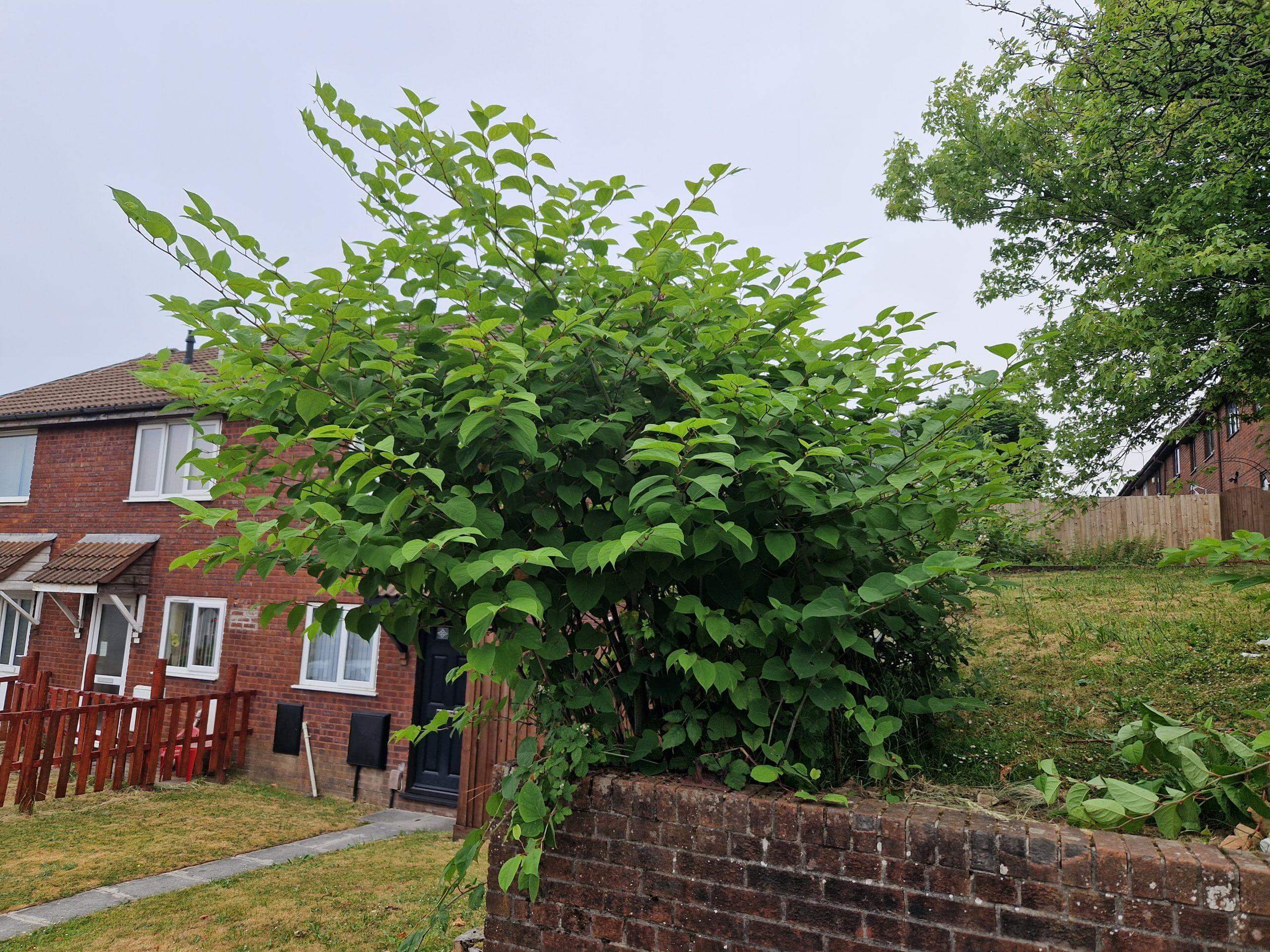
The Law on Japanese Knotweed
If you have Japanese Knotweed on your property, it is important to know the law to prevent it from spreading to your neighbour’s property. In the UK, Japanese Knotweed is classified as “controlled waste” under the Environmental Protection Act 1990. This means that it is illegal to allow the plant to spread to other areas, and you could face legal action if you do not take steps to control it.
Local Council
Your local council has the power to issue a Community Protection Notice (CPN) if they believe that you are not taking adequate measures to control Japanese Knotweed on your property. A CPN can require you to take specific actions, such as hiring a professional to remove the plant, and failure to comply can result in a fine of up to £2,500.
Neighbour
If your Japanese Knotweed is spreading to your neighbour’s property, they may be able to take legal action against you for damages. This is because Japanese Knotweed can cause structural damage to buildings and reduce the value of properties. It is important to take action to prevent the plant from spreading to your neighbour’s property to avoid any potential legal issues.
In summary, it is important to know the law regarding Japanese Knotweed to prevent it from spreading to other areas. Your local council can issue a Community Protection Notice if they believe you are not taking adequate measures to control the plant, and your neighbour may be able to take legal action against you if it is spreading to their property.
Preventing Japanese Knotweed from Spreading
Japanese Knotweed is a highly invasive plant species that can cause significant damage to buildings, roads, and other structures. If you have Japanese Knotweed on your property, it is essential to take steps to prevent it from spreading.
Covering and Barrier Methods
One way to prevent Japanese Knotweed from spreading is to cover the affected area with a non-permeable barrier. This can be done using heavy-duty plastic sheeting or geotextile fabric. The barrier should be buried at least 2 meters deep to prevent the plant from spreading through the soil.
Another method is to plant a barrier of non-invasive plants around the affected area. This can help prevent the spread of Japanese Knotweed by creating a physical barrier that the plant cannot penetrate.
Waste Disposal
Japanese Knotweed is considered controlled waste and must be disposed of at a licensed landfill site. You should never dispose of Japanese Knotweed in your regular household waste or compost.
When transporting Japanese Knotweed, it is important to use a registered waste carrier and obtain an environmental permit. You may also need a trade effluent consent if you are transporting the waste by road.
Chemical Control
Glyphosate-based herbicides are often used to control Japanese Knotweed. However, it is important to use only approved herbicides and follow the manufacturer’s instructions carefully.
If you are not confident in using herbicides, it may be best to hire a professional to carry out the treatment. They will have the necessary certificate of competence and can ensure that the treatment is carried out safely.
Professional Removal
If you have a large infestation of Japanese Knotweed, it may be best to hire a professional removal company. They will be able to safely remove the plant and dispose of it at a licensed waste disposal facility.
When choosing a removal company, make sure they have experience in dealing with Japanese Knotweed and hold the necessary certifications. They should also be able to provide you with a detailed plan of how they will remove the plant and prevent it from spreading.
By taking these steps, you can help prevent Japanese Knotweed from spreading and causing damage to your property and the environment.

How to Get Rid of Japanese Knotweed
If you have identified Japanese Knotweed on your property, you may be wondering how to get rid of it. There are a few methods you can use to eradicate this invasive plant.
Cutting Down and Digging Up
One method of getting rid of Japanese Knotweed is to cut down the stems and dig up the roots. This can be a time-consuming process, but it is effective if done correctly. Here are the steps to follow:
- Cut the stems down to ground level.
- Dig up the roots, making sure to remove as much of the rhizome system as possible.
- Dispose of the plant material at a licensed landfill site.
Excavation and Relocation
If the Japanese Knotweed has spread extensively, excavation and relocation may be necessary. This involves digging up the soil and removing all traces of the plant. Here are the steps to follow:
- Excavate the soil to a depth of at least 3 metres.
- Remove all traces of the root system, including any fragments.
- Dispose of the soil and plant material at a licensed landfill site.
- Replace the soil with clean, uncontaminated soil.
Chemical Treatments
Chemical treatments can be effective in killing Japanese Knotweed. However, it is important to use the correct herbicides and follow the instructions carefully. Here are the steps to follow:
- Apply a glyphosate-based herbicide to the leaves of the plant.
- Wait for the herbicide to be absorbed by the plant.
- Repeat the process over several growing seasons.
- Monitor the site for any regrowth.
It is important to note that burning Japanese Knotweed is not recommended. This can cause the plant to spread further, as the heat can cause the seeds to germinate.
By following these methods, you can effectively get rid of Japanese Knotweed and prevent it from spreading further.
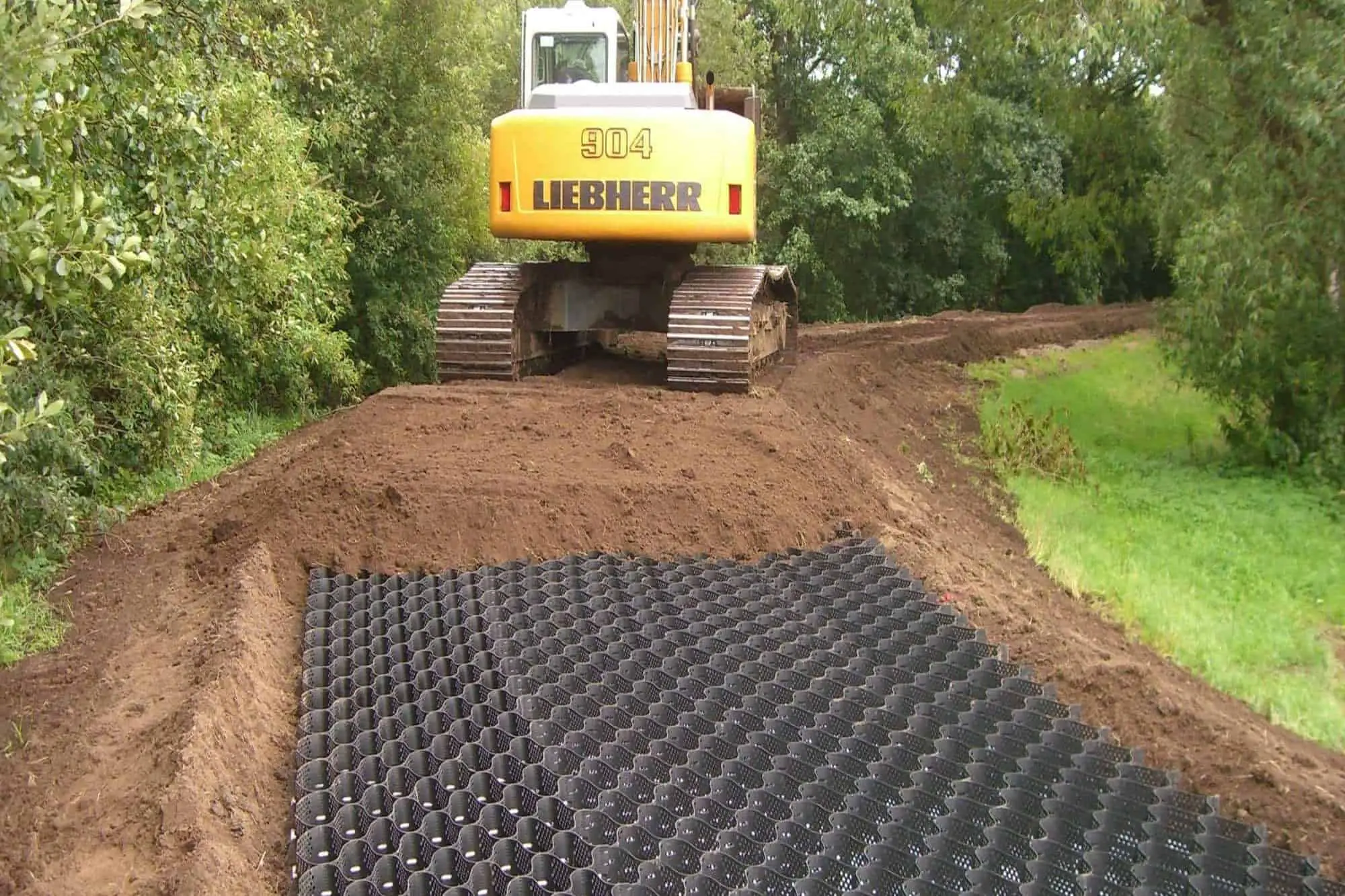
Preventing Japanese Knotweed from Reoccurring
Long-Term Control Methods
If you have successfully removed Japanese Knotweed from your property, the next step is to prevent it from reoccurring. Without proper prevention methods, the plant can quickly grow back and cause even more damage.
Here are some long-term control methods to prevent Japanese Knotweed from reoccurring:
Trenching
Trenching is a method used to prevent the spread of Japanese Knotweed by creating a physical barrier around the plant. This involves digging a trench around the plant and then lining it with a root barrier membrane. The membrane prevents the plant from spreading its roots and helps to contain it in one area.
Sink a Barrier
Another method to prevent Japanese Knotweed from spreading is to sink a barrier into the ground around the plant. This involves sinking a physical barrier, such as a sheet of metal or plastic, into the ground around the plant. The barrier should be at least 2m deep to prevent the plant from spreading its roots.
Root System Control
Controlling the root system of Japanese Knotweed is essential to prevent it from reoccurring. This can be done by digging up the plant’s roots and disposing of them properly. You can also use chemical treatments to kill the roots and prevent new growth.
Controlling Severe Infestations
If you have a severe infestation of Japanese Knotweed, it may be necessary to call in a professional to help you control it. They will be able to assess the situation and recommend the best course of action. This may involve using herbicides or other methods to control the plant.
By using these long-term control methods, you can prevent Japanese Knotweed from reoccurring and causing further damage to your property. Remember to always dispose of the plant properly and follow local regulations when dealing with invasive species.
Conclusion
Preventing the spread of Japanese Knotweed is essential for homeowners, professionals, and the community. With the right knowledge and experience, you can take practical steps to control and manage this invasive plant species.
When dealing with Japanese Knotweed, it’s crucial to work with professionals who have experience in removing and disposing of the plant correctly. They can advise you on the best methods for controlling and preventing the spread of the plant.
As a homeowner, you can take action to prevent Japanese Knotweed from spreading to your property by monitoring your garden regularly and taking steps to remove any plants that you suspect may be Japanese Knotweed.
If you live near rivers, streams, or roadsides, it’s essential to be aware of the potential for Japanese Knotweed to spread. You can help prevent the spread of the plant by reporting any sightings to the relevant authorities and taking steps to control the plant on your property.
In conclusion, preventing the spread of Japanese Knotweed requires a community effort. By working together and taking practical steps to control and manage the plant, we can help prevent the spread of this invasive species and protect our environment.


